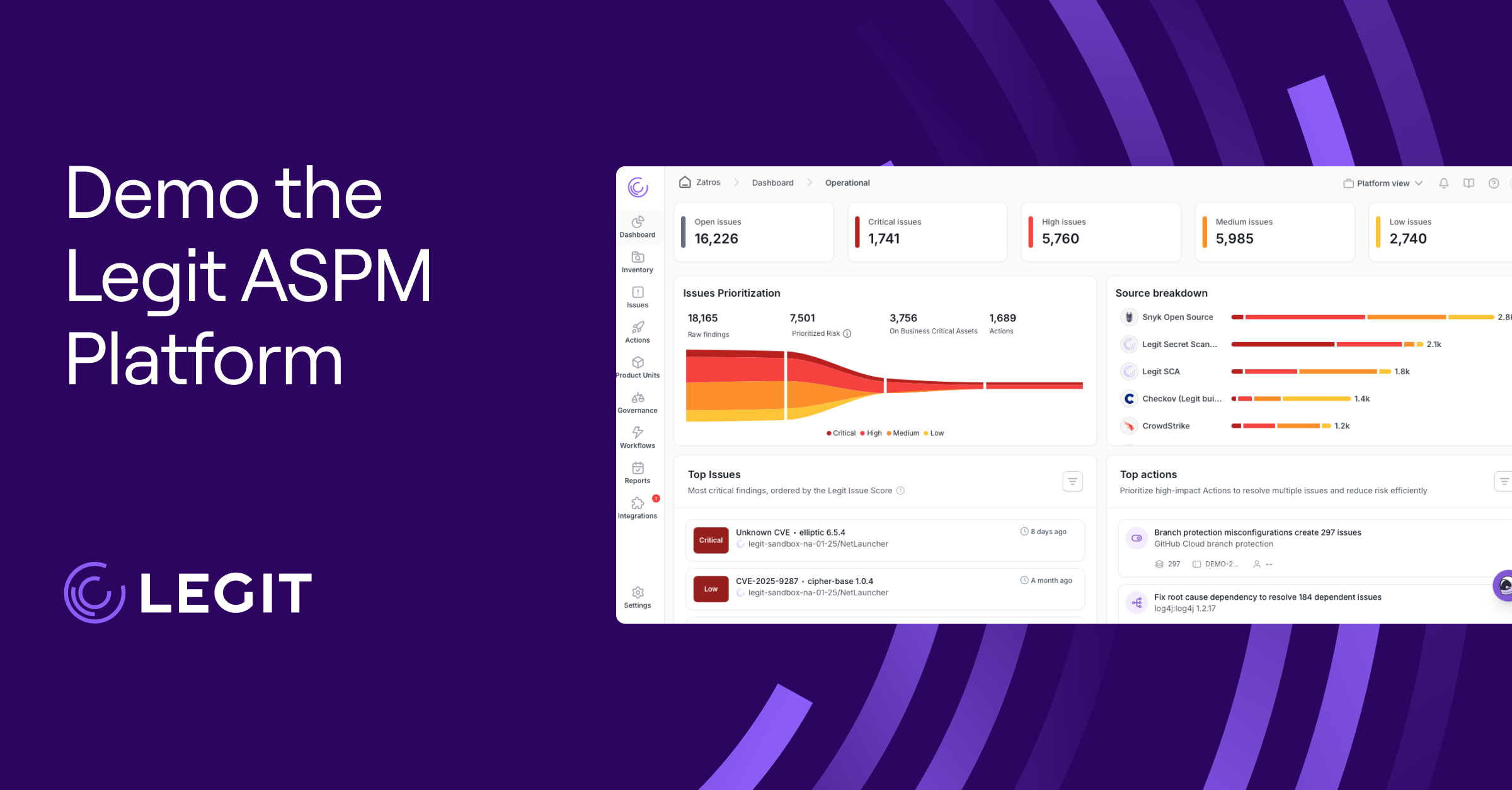When users have more permissions than they need, your risk skyrockets. Identity and access management (IAM) solutions draw the line—they verify who someone is and set clear boundaries around what they can access. That means tighter oversight, fewer vulnerabilities, and stronger compliance.
In this guide, we’ll explain how IAM works and why it matters. We’ll also share eight leading IAM platforms to help you choose the right fit for your needs.
What Is IAM?
Identity and access management, or IAM, is how organizations manage who receives access to what and what they’re allowed to do once they have it. It combines authentication (verifying identity) with authorization (defining permissions) to ensure that users only interact with the systems and data they actually need.
IAM serves on two fronts: to block unauthorized outsiders and to keep insiders from overstepping. For example, a developer might need access to a test environment to write and debug code—but not the production system, where even a small mistake could impact actual users or expose sensitive data. IAM enforces that boundary automatically, often through role-based access control (RBAC) that ties permissions to job function or risk level.
The best identity and access management solutions include features like single sign-on (SSO), multi-factor authentication (MFA), and lifecycle automation. Together, they balance ease of use with the oversight IT and security teams need to stay compliant and detect anomalies. And that, in turn, strengthens the company’s overall security posture.
How Does IAM Work?
IAM works in two steps:
- When someone attempts to log in, the system checks their credentials against a trusted identity database, often using MFA for additional security.
- The system then grants or denies access depending on factors like role, location, or device type.
Authentication and authorization work together to limit access to sensitive applications, systems, and data. And it all happens behind the scenes, continuously. IAM tools integrate with both cloud and on-premises platforms to enforce consistent policies and prevent unauthorized access across your organization.
Why Your Business Needs an IAM Solution
The basics of IAM are straightforward, but why does it matter for your organization? Here’s how identity access management delivers real value for both IT teams and everyday users.
Improves User Experience and Productivity
Modern identity management access tools simplify the login process by enabling SSO, which lets users access multiple tools with one set of credentials. That means fewer password resets, less frustration, and more time to focus on work. Many systems even include self-service portals so users can manage simple access requests without needing IT help.
Enhances Security Across Your Entire Environment
If your organization were a house, IAM locks the front door and keeps an eye on every room inside. It verifies identities with tools like MFA and applies role-based access so that only the right people reach sensitive systems. This reduces your attack surface and helps protect against credential theft and insider threats.
IAM solutions are also zero-trust. They use continuous verification and never assume trust based on location or device. And because IAM applies consistent access policies across software as a service (SaaS) platforms, it enforces cloud application security best practices at scale.
Reduces IT Costs and Complexity
IAM solutions take routine tasks off IT’s plate, automating tasks like access requests, onboarding, offboarding, and audits. They streamline provisioning and cut down on help desk tickets, so teams can focus on more strategic initiatives. Cloud-based options like identity as a service (IDaaS) platforms also lower infrastructure overhead by eliminating the need for on-premises tools.
Supports Compliance With Regulations
Most security frameworks require strict access control, including the General Data Protection Regulation (GDPR), Health Insurance Portability and Accountability Act (HIPAA), Payment Card Industry Data Security Standard (PCI DSS), and Sarbanes-Oxley Act (SOX). IAM solutions provide audit-ready logs, automated policy enforcement, and built-in governance workflows—all designed to support compliance with security and privacy regulations.
8 Top IAM Solutions
The right IAM platform for you depends on your organization’s size, risk tolerance, and tech stack. The eight options below offer a range of strengths—from deep integrations to flexible scaling—to meet the demands of modern identity management.
1. Auth0
Auth0 focuses on application-level identity management and is particularly well-suited for developers embedding secure login flows into web and mobile apps. It supports passwordless login, social identity providers, and MFA out of the box. And with its developer-first toolkit and broad customization options, Auth0 is a popular choice for startups and teams building customer-facing apps and APIs.
2. CyberArk Workforce Identity
CyberArk Workforce Identity (formerly Idaptive) secures access to apps, devices, and infrastructure across your organization. Standout features include adaptive MFA, automated provisioning, and user behavior analytics. It tailors access controls based on real-time contexts like user location and device posture, giving you more precise access controls than static role-based permissions alone.
3. IBM Security Verify (ISAM)
IBM’s IAM solution emphasizes federated identity, secure web access, and strong user authentication. It supports SSO across cloud and on-premises systems and works with industry standards like Open Authorization (OAuth) and Security Assertion Markup Language (SAML) to simplify secure authentication. By consolidating access through a single identity platform, it reduces password fatigue. The platform also offers advanced capabilities like contextual access policies and self-service portals that improve usability and security.
4. JumpCloud
JumpCloud is a directory as a service (DaaS) platform for small and midsize businesses. It combines core identity services like SSO and MFA with device management, making it ideal for companies without large IT teams. JumpCloud also includes cloud directory services, so businesses can eliminate their on-prem Active Directory footprint while retaining centralized identity control.
5. Microsoft Entra
Formerly part of Azure Active Directory, Microsoft Entra combines identity governance, privileged access management, and risk-based conditional access. It’s a strong choice for enterprises that use Microsoft tools but still need third-party integrations. With features like just-in-time access, entitlement reviews, and detailed audit logging, you can manage privileged accounts and meet compliance requirements at the same time.
6. Okta IAM
Okta is a cloud-native IAM platform known for its flexibility and ease of integration across hybrid environments. It provides SSO, MFA, and user lifecycle management features that help automate onboarding and access governance. Okta also includes robust API access controls that secure backend services, a key step in applying sound API key security best practices across cloud environments and development pipelines.
7. SailPoint IdentityIQ
SailPoint targets complex enterprise environments with strict compliance and governance needs. It offers continuous access certification and policy enforcement while lifecycle automation keeps user activity in check. SailPoint also enforces least privilege by analyzing access trends, identifying risky behavior, and flagging abnormalities—critical for regulated industries with tight audit requirements.
8. SentinelOne Singularity Identity
SentinelOne’s Singularity Identity focuses on defending Active Directory and cloud-based identity assets against modern threats, including credential misuse, lateral movement, and privilege escalation. It uses deception-based tactics, machine learning, and telemetry to detect and contain identity-related threats in real time. It also integrates with existing IAM stacks like Azure AD and Okta, adding layered protection without disrupting operations.
Key Features to Look for in IAM Solutions
The best IAM solutions share core features to balance user convenience with strong access controls. Here’s what to look for.
Passwordless and Adaptive MFA
Top platforms support passwordless login options, including FIDO2 keys or biometric authentication, alongside adaptive MFA. These systems evaluate real-time context like device, IP, or location to determine which authentication factors to apply.
SSO and Session Control
SSO lets users access all their approved apps with one login. This simplifies daily workflows and reduces risk by minimizing the number of password entry points that attackers can target. Leading IAM platforms also pair SSO with session monitoring to detect and respond to anomalies in real time.
Privileged Access and Lifecycle Management
IAM tools help control privileged accounts and automate user provisioning, from onboarding to offboarding. That includes revoking access when employees leave, reducing the chance of ghost accounts and shadow access across your infrastructure.
Granular Access Control with Role-Based Policies
With RBAC, users only receive the necessary access—nothing more. This principle of least privilege (PoLP) helps contain threats and maintain clean boundaries around sensitive assets, like source code repositories or encryption key management systems.
Built-In Audit Trails and Compliance Reporting
Modern IAM platforms generate detailed logs that show who accessed what, when, and from where. These records support compliance with industry standards like GDPR and HIPAA and simplify the investigation process if something goes wrong.
Legit Security: A Complement for IAM Solutions
IAM manages who gets in—but that’s only the start. Legit Security protects what happens next by securing your software supply chain, from developer activity to build systems and deployment pipelines.
Beyond monitoring source code repositories and CI/CD workflows, the platform scans third-party dependencies for policy violations, hardcoded secrets, and risky configurations.
And with the support of Legit’s AI agents, which automate responses across the secure software development life cycle, your team can spot threats earlier and prioritize issues more accurately.
Complete your access strategy with end-to-end SDLC protection from Legit Security. Book a demo to see how it works.
Download our new whitepaper.


